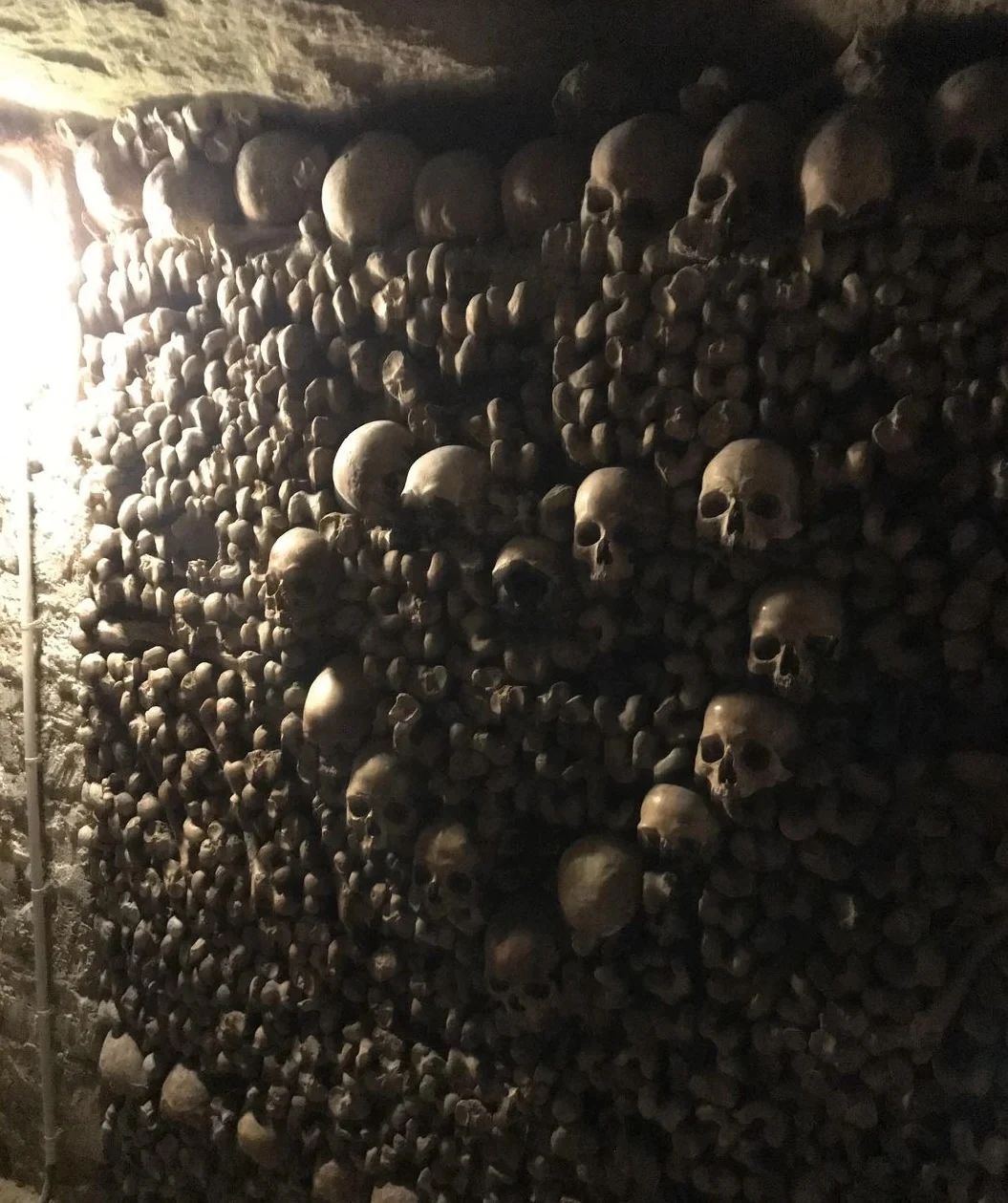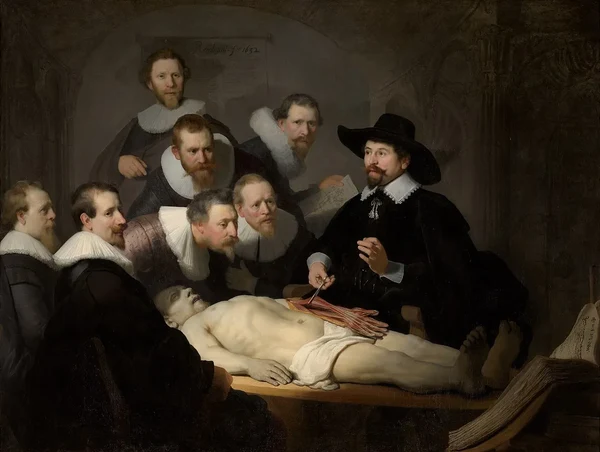Background
In central Paris, was the cemetery of the Innocents, also known as Saints-Innocents. Burials here began in the 12th century, and even seven centuries later, did not stop. In 1780, it was the main place for burials for a city with more than half a million people. This cemetery was roughly the size of a football field.
This wasn't what you would imagine a cemetery today, and mass burials were common with people stacked on top of people. When one pit was filled up to 15,000 bodies, it was covered and another was began. Toward the end of the eighteenth century and the beginning of the French Revolution, bodies were just dumped along the edges of the cemetery. Eventually, this cemetery rose to be about six feet above the street level with 600 years of bodies.
In May of 1780, Monsieur Gravelot, a man living in the Rue de la Lingerie, not far from the cemetery, made a formal complaint that there was a smell coming from his basement. It was so strong it soon could be smelled through the whole house, and his wife became sick. The state sent an investigator, Alexis Cadet de Vaux, who confirmed the smell was from the decaying bodies from the cemetery. Not only did this affect his home, but many neighbors as well.
Given its proximity to the main food market of the city, the smell did not only affect neighbors houses. Louis-Sebastien Mercier, a chronicler of life in Paris, wrote that the smell alone threatened to poison the air of the city as well as any liquid nearby and people couldn't have wine, milk, or even soup without tasting death. Mercier also reported that the humidity of decay clung to the houses nearby, so the walls were damp to the touch with condensation from the decaying bodies.
It wasn't only Monsieur's wife who got sick. Other residents reported respiratory trouble, liver issues, delirium, and vomiting. In 1776, a local shoemaker reportedly tripped and fell into an open pit. He was found dead the next day, though it's not known whether it was from the fall itself or from what he landed on in this pit.
It wasn't only the smell though, a few years earlier, in the 1770s, the graveyard exploded into the basements of many of the neighboring houses, filling them with bodies in no condition to be moved. In many older cemeteries, they would usually leave the bodies buried for a certain amount of time before removing the bones and interring them in charnel houses in other locations. The cemeteries were overflowing, and charnel houses throughout the city were packed. There was nowhere left for the bodies to go.
Louis XVI officially closed the Cemetery of Innocents in 1780, followed by the rest of the public cemeteries in the city. The Journal of Paris commented on the issue that year, writing that no one could possibly deny the danger that the dead posed to the living.
Making space for the Dead
Beneath Paris was a large system of underground quarries that had been mined for limestone since the fourteenth century. The rock was mostly soft, and over-mining meant that the streets above weren't as stable as they should have been. In 1774, the Rue Denfert-Rochereau collapsed, a hundred feet of street and houses caving into the empty mines a hundred feet below.
In response to this, and many other collapses due to mining, Louis XIV signed a decree in September of 1776 to stop mining under public roads. 177 miles of tunnels stretched beneath the city in several levels descending hundreds of feet below the streets. The technique the medieval miners had used meant that wells were dug straight down into the deposits, then the minerals were removed via horizontal tunnels gradually winding their way up.
It was seen as an easy and natural place to put the bodies. A portion of the quarries was designated as a public ossuary, a place to store bones. It began at an old city gate locally known as the Barriere d'Enfer, or the Gate of Hell. It was an appropriate starting point for what would soon become known as the Empire of Death.
The Empire of Death
Beginning in April of 1785, bodies were moved at night from Paris's cemeteries to their new place beneath the city. More than twenty thousand bodies were removed from the Cemetery of Innocents, but that was just the start. Cemeteries and charnel houses through the city were slowly emptied and carried to the catacombs by night for the next twenty years. By the end, an estimated six million bodies had been placed in quarries beneath the city.
Napoleon Bonaparte eventually ordered the catacombs to be converted into a public monument. ventilation was improved, and sections of bones were artfully arranged by a team led by engineer Hericart de Thury. From its grand opening in 1809 until 1830, the catacombs were a popular tourist attraction.
A Dangerous Tourist Attraction
Starting at the Gate of Hell, guests would descend ninety steps below the city to tour the catacombs by candlelight. The passages were filled with Thury's decoratively arranged bone sculptures as well as some architectural features, including, a pond full of goldfish. Since they had been renovated, the catacombs were relatively safe, but tour guides still had to warn guests to never leave the group. Lost underground without a candle or any chance of anyone above hearing you scream, if you took a wrong turn and somehow ended up in the quarry, you might never make it out.
As early as 1793, a hospital worker named Philibert Aspairt entered the catacombs from an entrance in the courtyard of the Val-de-Grace hospital. No one knows for sure why he went down there alone, but it has been suggested that he hoped to find a way into the cellars of a nearby convent to steal a bottle of Chartreuse. His body wasn't found until eleven years later, when it was identified thanks to his set of hospital keys, which hung around his waist.
Today, the quarries adjacent to the catacombs have been filled with art created by people who explore the tunnels illegally. This is illegal now due to how dangerous it is, but that hasn't put people off. Murals and sculptures cover the walls, everything from reproductions of classical works of art to surreal monsters and 3D figures, all of it left over a period of more than 200 years. Murals from the French Revolution and the Prussian Siege are side by side with drawings from the German occupation and cartoon characters from the 90s.
Paris has some of the best art museums in the world, but the largest and most exclusive is under the feet of the millions of oblivious tourists who pass through every year.






















 Slavshit
Slavshit

 Sandshit
Sandshit

Jump in the discussion.
No email address required.
Ah, yes, the Paris Catacombs. Remember how one dude smuggled a skull out of there once and then stuck his dick in it b/c 4chan said he wouldn't?
Jump in the discussion.
No email address required.
LMFAOO I forgot that existed until now
Jump in the discussion.
No email address required.
Haha IF I HAVE TO REMEMBER, SO DO YOU!
I wonder how cursed that dude ended up becoming?
Jump in the discussion.
No email address required.
More options
Context
More options
Context
is it real
Jump in the discussion.
No email address required.
More options
Context
More options
Context
Jump in the discussion.
No email address required.
huh?
Jump in the discussion.
No email address required.
More options
Context
More options
Context
Barbarians.
Jump in the discussion.
No email address required.
More options
Context
Jump in the discussion.
No email address required.
More options
Context